#Wolfgang Hoffmann
Text

Wolfgang Hoffmann - Nordic Landscape. 1958
3 notes
·
View notes
Text
Freakin', Tiquen 2023 - Destination Detroit: Part Two - Tabernacles, Tables & Trays

View On WordPress
#1930&039;s#Coca-Cola#Coca-Cola Tray#Detroit#Detroit Art Deco#Evercraft#Father Charles Coughlin#Henry J. McGill#Howell Furniture#Rene Paul Chambellan#Royal Oak Michigan#St. Thérèse de Liseux#The National Shrine of the Little Flower Basilica#The Radio Priest#Vintage Barware#Wolfgang Hoffmann
0 notes
Text
Canzona, Passamezzo & Capriccio
Johann Vierdanck (battezzato il 5 febbraio 1605 - 1646) Canzona, Passamezzo [4:33] & Capriccio [11:56]. Parnassi musici: Margaret MacDuffie, Matthias Fischer e Wolfgang Greser, violini; Stephan Schrader, violoncello; Sergio Azzolini, fagotto; France Beaudry-Wichmann, contrabbasso; Hubert Hoffmann, arciliuto; Martin Lutz, organo e clavicembalo.
youtube
View On WordPress
#France Beaudry-Wichmann#Hubert Hoffmann#Johann Vierdanck#Margaret MacDuffie#Martin Lutz#Matthias Fischer#Parnassi musici#Sergio Azzolini#Stephan Schrader#Wolfgang Greser#Youtube
0 notes
Text
Reportage: Pegasus Verein für kreatives Schreiben – Jahrestreffen 2022 - FREIHEIT
Reportage: Pegasus Verein für kreatives Schreiben – Jahrestreffen 2022 – FREIHEIT
[vc_row][vc_column][vc_column_text]
Reportage: Pegasus Verein für kreatives Schreiben – Jahrestreffen 2022 – FREIHEIT
Teil 1 (Hördauer 65 Minuten)
https://literaturradiohoerbahn.com/wp-content/uploads/2022/11/Reportage-Pegasus-2022-Teil-1-upload.mp3
Teil 2 (Hördauer 31 Minuten)
https://literaturradiohoerbahn.com/wp-content/uploads/2022/11/Reportage-Pegasus-2022-Teil-2-upload.mp3
Am 23. Oktober…

View On WordPress
#Akademisches Forum Albertus Magnus#Barbara Ludwig#Charlotte Hoffmann#Christa Stopp#Heike Stuckert#Helga Ziehfreund.#Juliane Reister#Kirsten Adelsberger#Michael Stiftland#Nicole Schlichte#Ortwin Haertel#Pegasus#Rabea Müller#Reportage#Ruth Birk#Steven Lundström#Ute Lutsch#Wolfgang Riegert
0 notes
Text
Share your GOS2 bibliography with me
How crazy is it that season 2 has basically forced me to go back to university. I’ve done more reading and critical analysis and historical research than I have in years. I bite my thumb at you, Neil (affectionate).
And as I’m sure I’m not alone in this, I’d love to see your bibliography of all of the references or reading/watch lists. I’m sure to pick up a few good ones! I’ll go first.

Movies + TV
Arrival - Denis Villeneuve
Clue - Jonathan Lynn
I Know Where I'm Going - Powell & Pressburger
The Ball - Magnus Dennison and Katja Roberts
Every Day - Michael Sucsy
About Time - Richard Curtis
The Red Shoes - Powell & Pressburger
The Small Back Room - Powell & Pressburger
The Tales of Hoffmann - Powell & Pressburger
Stairway to Heaven - Powell & Pressburger
Ill Met By Moonlight - Powell & Pressburger
The League of Gentlemen's Apocalypse - Steve Bendelack
Monty Python's Life of Brian - Terry Jones
Monty Python and the Holy Grail - Terry Gilliam & Terry Jones
The Twilight zone (The Arrival) Boris Sagal
The Twilight zone (The Hitch-Hiker) - Alvin Ganzer
Staged (Seasons 1 and 2) - Simon Evans & Phin Glynn
Books
The Crow Road - Iain Banks
The Bridge - Iain Banks
The Scholars of Night - John M. Ford
Symbols of Sacred Science - René Guénon
Catch-22 - Joseph Heller
A Tale of Two Cities - Charles Dickens
The Colour of Magic - Terry Pratchett
Night Watch (Discworld) - Terry Pratchett
Parlement of Foules - Geoffrey Chaucer
The language of the birds - Farid ud-Din Attar
Pride & Prejudice - Jane Austen
Persuasion - Jane Austen
Midnight Days - Neil Gaiman
Negative Burn #11 - Neil Gaiman
Chivalry - Neil Gaiman
Other
Les contes d'Hoffamann - opera, Jacques Offenbach
Don Giovanni - opera, Wolfgang Amadeus Mozart
The Line, the Cross and the Curve - musical, Kate Bush
The book of Enoch - Ethiopian Apocryphal trs. Rev. George Schodde, PhD
I'm sure there will be more... sigh.
Spoiler alert: there are more!
Donnie Darko - 2001, Richard Kelly
Nothing Lasts Forever - 1984, Tom Schiller
The Ghosts of Berkley Square - 1947, Vernon Sewell
Brazil! - 1985, Terry Gilliam
No Bed for Bacon - 1941, Caryl Brahms and S. J. Simon
Don't, Mr Disraeli! - 1949, Caryl Brahms and S. J. Simon
Murder Mysteries - Neil Gaiman
The Man Who Was Thursday - 1908, GK Chesterton
Small Gods - 1992, Terry Pratchett
Ipomadon - Medieval - Trs. Richard Scott-Robinson
#go season 2#good omens 2#art director talks good omens#go2#good omens season 2#good omens#good omens analysis#good omens s2#good omens season two#neil gaiman#good omens meta#good omens prime
146 notes
·
View notes
Text
Deutschribing Germany
Literature
Middle Ages (5th-15th centuries)
Medieval German literature can be divided into two periods: Old High German literature (8th-11th centuries) and Middle High German literature (12th-14th centuries). The only surviving works from the first period are the Hildebrandslied (Lay of Hildebrand), which is the earliest poetic text in German and tells of the tragic encounter in battle between a father and a son, and Muspilli, which deals with the fate of the soul after death and at the Last Judgment.

Middle High German literature saw a 60-year golden age known as mittelhochdeutsche Blütezeit, in which lyric poetry in the form of Minnesang—the German version of courtly love—blossomed thanks to poets such as Walther von der Vogelweide and Wolfram von Eschenbach. Another important genre during this time was epic poetry, of which the most famous example is the Nibelungenlied (The Song of the Nibelungs), which narrates the story of prince Siegfried and princess Kriemhild, among other characters.
Renaissance (15th-16th centuries)
Early New High German literature includes works such as Der Ring (The Ring) by Heinrich Wittenwiler, a 9,699-line satirical poem where each line is marked with red or green ink depending on the seriousness of the material, and Das Narrenschiff (Ship of Fools) by Sebastian Brant, a satirical allegory that contains the ship of fools trope.
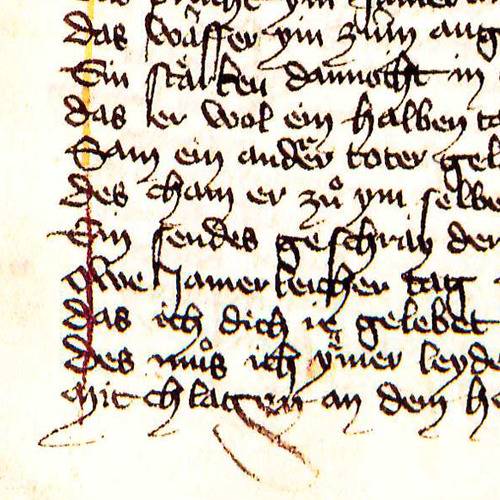
Other important authors are satirist and poet Thomas Murner, humanist Sebastian Franck, and poets Johannes von Tepl and Oswald von Wolkenstein.
Baroque (16th-17th centuries)
The Baroque period is characterized by works that reflected the experiences of the Thirty Years’ War and tragedies (Trauerspiele) on Classical themes, the latter were written by authors such as Andreas Gryphius and Daniel Caspar von Lohenstein. The most famous work is Der abenteuerliche Simplicissimus (Simplicius Simplicissimus) by Hans Jakob Christoffel von Grimmelshausen, a picaresque novel that narrates the adventures of the naïve Simplicissimus.
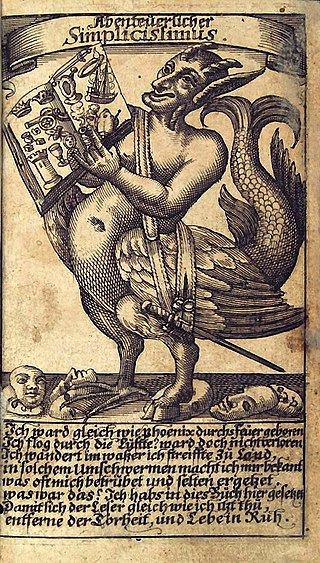
Enlightenment (17th-18th centuries)
The most important writers of the Enlightenment are Christian Felix Weiße, Christoph Martin Wieland, Gotthold Ephraim Lessing, and Johann Gottfried Herder.
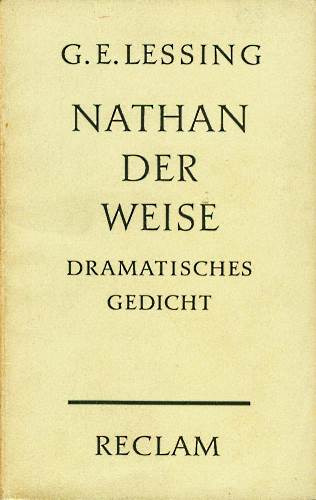
The Age of Reason saw the emergence of two literary movements: Empfindsamkeit (sentimental style) and Sturm und Drang (storm and stress). The first one intended to express true and natural feelings and featured sudden mood changes. The latter movement was characterized by individual subjectivity and extremes of emotion in response to the rationalism imposed by the Enlightenment.
Weimar Classicism (18th-19th centuries)
The main drivers behind Weimar Classicism, which synthesized ideas from Classicism, the Enlightenment, and Romanticism, were Johann Christoph Friedrich von Schiller, and Johann Wolfgang von Goethe.
During this period, Schiller published Die Bürgschaft (The Pledge), a ballad based on the legend of Damon and Pythias found in the Latin Fabulae, and Don Karlos (Don Carlos), a historical tragedy about Carlos, Prince of Asturias, while Goethe wrote Egmont, a play heavily influenced by Shakespearean tragedy, and Faust, a tragic play in which the main character sells his soul to the devil that is considered the greatest work of German literature.
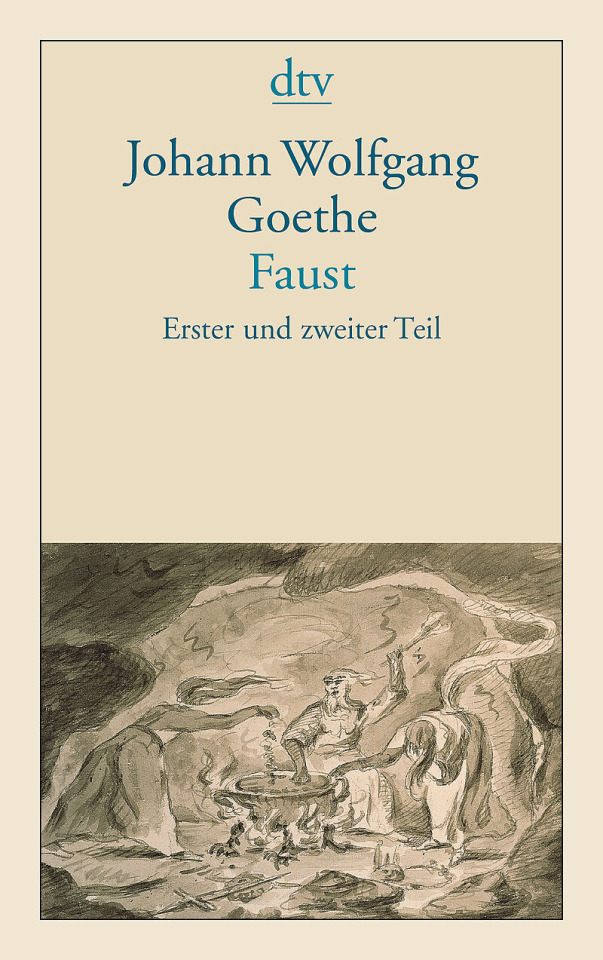
Romanticism (18th-19th centuries)
Important Romantic writers include E. T. A. Hoffmann, author of Der Sandmann (The Sandman), a short story based on the mythical character of said name that puts people to sleep by sprinkling sand on their eyes; Heinrich von Kleist, who wrote Das Kätchen von Heilbronn (The Little Catherine of Heilbronn), a drama set in Swabia in the Middle Ages; Joseph Freiherr von Eichendorff, author of Das Marmorbild (The Marble Statue), a novella about a man who struggles to choose between piety and a world of art, and Novalis, author of Hymnen an die Nacht (Hymns to the Night), a collection of six poems.

Folk tales collected by the Brothers Grimm became very popular during the Romantic period, as they represented a pure form of national literature and culture.
Biedermeier and Young Germany (19th century)
The Biedermeier period contrasts with the Romantic era and is best exemplified by poets Adelbert von Chamisso, Annette von Droste-Hülshoff, and Wilhelm Müller.
Young Germany was a youth movement whose main proponents were Karl Gutzkow, Ludolf Wienbarg, and Theodor Mundt.
Realism and Naturalism (19th century)
The most representatives realist authors are Gustav Freytag, Theodor Fontane, and Theodor Storm, while Gerhart Hauptmann was the most important naturalist writer.
Weimar literature (20th century)
During the Weimar Republic, writers such as Erich Maria Remarque, Heinrich Mann, and Thomas Mann presented a bleak look at the world and the failure of politics and society.

Expressionism (20th century)
As a modernist movement, Expressionism presented the world solely from a subjective perspective, distorting it for emotional effect. Famous authors include novelists Alfred Döblin and Franz Kafka, playwrights Ernst Toller and Georg Kaiser, and poets August Stramm and Else Lasker-Schüler.

Neue Sachlichkeit (20th century)
Neue Sachlichkeit (New Objectivity) arose as a reaction against expressionism and was characterized by its political perspective on reality and portrayal of dystopias in an emotionless reporting style, showing cynicism about humanity. Authors associated with this movement include Erich Kästner, Hans Fallada, and Irmgard Keun.
Nazi Germany (1933-1945)
During the Nazi regime, some authors went into exile, while others submitted to censorship. The former, who either were of Jewish ancestry or opposed the regime for political reasons, include writers Alice Rühle-Gerstel and Anna Seghers, playwright Bertolt Brecht, and poet and novelist Hermann Hesse/Emil Sinclair.
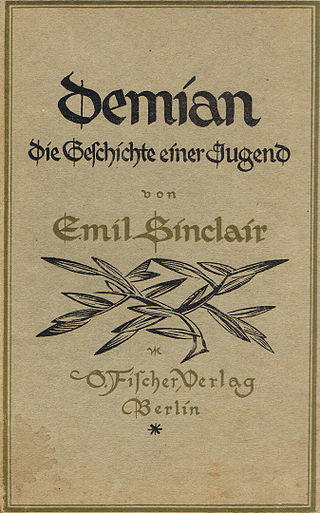
Those who stayed and engaged in inner emigration include writer Friedrich Reck-Malleczewen, poet and essayist Gottfried Benn, writer Hans Blüher, and poet and novelist Ricarda Huch.
Post-war literature (20th century)
The most famous authors in West Germany were Edgar Hilsenrath, Günter Grass, Heinrich Böll, and Group 47, a group of participants in writers’ meetings invited by Hans Werner Richter.
East German writers include Christa Wolf, Heiner Müller, Reiner Kunze, and Sarah Kirsch.
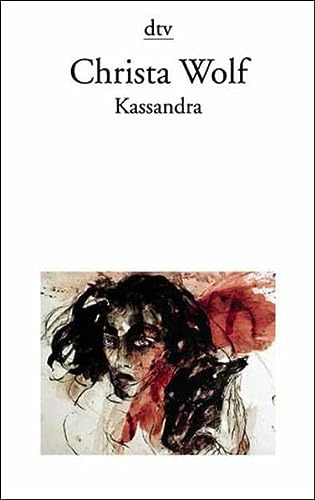
Contemporary literature (21st century)
Fantasy and science fiction authors include Andreas Eschbach, Frank Schätzing, and Wolfgang Hohlbein. Some of the most important poets are Aldona Gustas, Hans Magnus Enzensberger, and Jürgen Becker. Thriller is best represented by Ingrid Noll. Fiction novelists include Herta Müller, Siegfried Lenz, and Wilhelm Genazino.
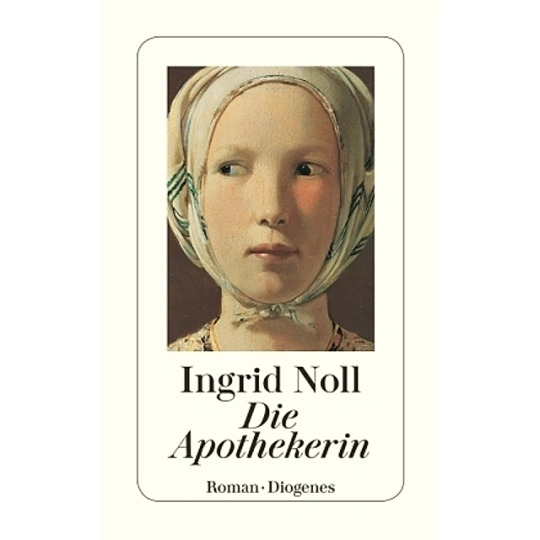
20 notes
·
View notes
Text
Reading List 2023
Ocean Vuong: Night Sky With Exit Wounds
Alena Mornštajnová: Hana
Wolfgang Benz: Theresienstadt. Ein Geschichte von Täuschung und Vernichtung.
Jáchym Topol: Die Teufelswerkstatt [org. title: Chladnou zemí]
Ocean Vuong: Time is a Mother
Richard Siken: Crush
Ben Nevis: Die Drei ??? Die Yacht des Verrats
Frank Wedekind: Frühlings Erwachen (reread)
James Ellroy: Die Schwarze Dahlie [org. title: The Black Dahlia]
André Marx: Die Drei ??? und der Puppenmacher
Evelyn Boyd: Rocky Beach Crimes #2. Mord unter Palmen.
Peter Hallama: Nationale Helden und jüdische Opfer. Tschechische Repräsentationen des Holocaust.
Brigitte Johanna Henkel-Waidhofer: Die Drei ??? Späte Rache
Kim Newman: Professor Moriarty. The Hound of the D‘Urbervilles. (reread)
Vera Schiff: The Theresienstadt Deception. The Concentration Camp the Nazis Created to Deceive the World.
Evelyn Boyd: Rocky Beach Crimes #2. Mord unter Palmen. (reread)
Josef Bor: Die verlassene Puppe [org. title: Opuštěná panenka]
Kari Erlhoff: Rocky Beach Crimes #1. Tödliche Törtchen.
Susanna Partsch: Wer klaute die Mona Lisa? Die berühmtesten Kunstdiebstähle der Welt.
Kathy Reichs: Virals #1. Tote können nicht mehr reden. [org. title: Virals] (reread)
Arthur Schnitzler: Reigen (reread)
Evelyn Boyd: Die Drei ??? Teuflisches Foul
Faye Kellerman: Der Zorn sei dein Ende [org. title: The Hunt]
J.D. Salinger: The Catcher in the Rye
Władysław Szlengel: Was ich den Toten las [org. title: Co czytałem umarłym]
Hanna Krall: Dem Herrgott Zuvorkommen [org. title: Zdążyć przed Panem Bogiem]
Ursula K. Le Guin: The Dispossessed
Thomas Mann: Der Tod in Venedig
James Oswald: Natural Causes. An Inspector McLean Novel.
Sylvia Plath: The Bell Jar (reread)
Christoph Dittert: Die Drei ??? Melodie der Rache
Maria Rolnikaitė: Mein Tagebuch [org. title: Ja dolžna rasskazat']
Mark Thompson: Leatherfolk. Radical Sex, People, Politics and Practice.
James Baldwin: Giovanni‘s Room
Christopher Tauber, Hanna Wenzel: Rocky Beach. Eine Interpretation.
Lorraine Vivian Hansberry: A Raisin in the Sun
Jonathan Kellerman: Unnatural History. An Alex Delaware Novel.
Robert Arthur: Die Drei ??? und die Geisterinsel. [org. title: The Three Investigators in the Secret of Skeleton Island]
Evelyn Boyd: Rocky Beach Crimes #3. Eiskalter Rausch.
André Marx: Die Drei ??? Labyrinth der Götter
John Barth: Lost in the Funhouse
Langston Hughes: Selected Poems of Langston Hughes.
Claude McKay: Harlem Shadows. The Poems of Claude McKay.
Jonathan Kellerman: Exit. Ein Alex Delaware Roman. [org. title: Devil‘s Waltz. An Alex Delaware Novel.] (reread)
David Henry Hwang: M Butterfly
James Oswald: The Book of Souls. An Inspector McLean Novel.
Jonathan Kellerman: Time Bomb. An Alex Delaware Novel. (reread)
Manuela Günter: Überleben schreiben. Zur Autobiographik der Shoah.
Birgit Kröhle: Geschichte und Geschichten. Die literarische Verarbeitung von Auschwitz-Erlebnissen.
Alexander F. Spreng: Der Fluch (reread)
Sibylle Schmidt: Zeugenschaft. Ethische und politische Dimensionen.
Sibylle Schmidt: Ethik und Episteme der Zeugenschaft
Kari Erlhoff & Christoph Dittert: Die Drei ??? und die Salztote
Jeanette McCurdy: I‘m Glad My Mom Died
E.T.A. Hoffmann: Der Sandmann
Hendrik Buchna: Die Drei ??? Drehbuch der Täuschung
Michael Scott: The Secrets of the Immortal Nicholas Flamel #2. The Magician. (reread)
Alain Locke: The New Negro
Mascha Kaléko: Großstadtliebe. Lyrische Stenogramme.
Marco Sonnleitner: Die Drei ??? Der Tag der Toten
Georg Heym: Gedichte [herausgegeben von Stephan Hermlin]
Rose Ausländer: Hinter allen Worten. Gedichte. [herausgegeben von Helmut Braun]
Vladimir Nabokov: Lolita
Paul Celan: Ausgewählte Gedichte. Zwei Reden. [herausgegeben von Günther Busch]
Rich Cohen: Lake Shore Drive [org. title: Lake Effect]
Jan T. Gross: Neighbors. The Destruction of the Jewish Community in Jedwabne, Poland.
Kathy Reichs: Virals #2. Nur die Tote kennt die Wahrheit. [org. title: Seizure]
Jonathan Kellerman: Bones. An Alex Delaware Novel. (reread)
Akwaeke Emezi: You made a Fool of Death with your Beauty
Friedrich Schiller: Maria Stuart
Bret Easton Ellis: American Psycho
Christian Handel: Die Hexenwald-Chroniken #2. Palast aus Gold und Tränen.
Maurice Leblanc: Arsène Lupin und der Schatz der Könige von Frankreich [org. title: L'Aiguille creuse]
E.T.A. Hoffmann: Nussknacker und Mausekönig
Marco Sonnleitner: Die Drei ??? Panik im Park
Ben Nevis: Die Drei ??? Tal des Schreckens
Michael Borlik: Ihr mich auch
Robert Arthur: Die Drei ??? und der grüne Geist [org. title: Alfred Hitchcock and the Three Investigators in the Mystery of the Green Ghost]
Barbara Köhler: Niemands Frau. Gesänge.
Christoph Dittert: Die Drei ??? Hotel der Diebe
Cornelia Funke: Tintenwelt #4. Die Farbe der Rache.
DNF:
Thomas Ziebula: Paul Stainer #1. Der rote Judas.
Faye Kellerman: Mord im Garten Eden [org. title: The Garden of Eden and Other Criminal Delights]
#end of 2023#reading list#bookblr#readblr#to my utter surprise i just breezed through some books in december and did end up reaching my goal of 80 books#read books that were originally published in: german - english - czech - polish - lithuthian (i think) - french#read more poetry than ever before i think#read some real 'classics' and enjoyed most of them a lot#if you're curious about anything on here or just wanna talk about any of these books *please* send me an ask or something#i love talking about books
8 notes
·
View notes
Text
Dread by the Decade: Faust – Eine deutsche Volkssage
👻 My Kofi ❤️
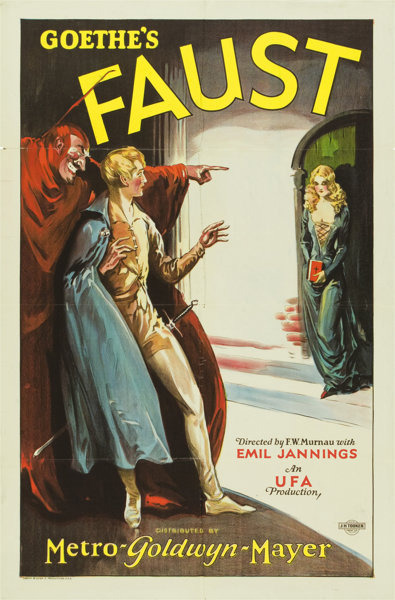
English Title: Faust: A German Folktale
Source Material: "Faust" by Johann Wolfgang von Goethe
Year: 1926
Genre: Occult
Rating: UR (Suggested: PG-13)
Country of Origin: Germany
Language: Silent
Runtime: 1 hour 55 minutes

Director: F. W. Murnau
Writer: Hans Kyser
Cinematographer: Carl Hoffmann
Cast: Gösta Ekman, Emil Jannings, Camilla Horn

Plot: Mephisto makes a bet with an angel that he can corrupt a good man’s soul.
Review: While it left me wanting in terms of story, the film makes up for it with stunning visuals and special effects.
Overall Rating: 4/5
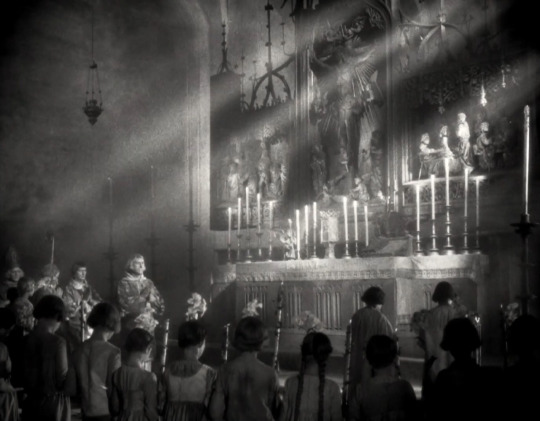
Story: 3/5 - Though still interesting, the film departs from its source material, trading philosophical grandeur for a rather cliche love story.
Performances: 3.5/5 - Jannings is equal parts sinister and comical as Mephisto, and Ekman and Horn are solid.
Cinematography: 5/5 - One of the most gorgeous and visually engaging movies of the silent film era.
Editing: 4/5
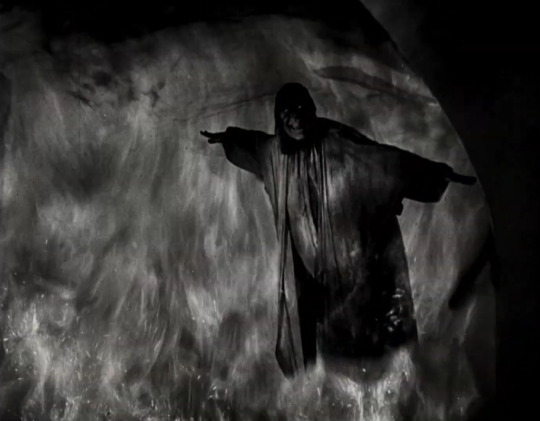
Music: 4/5
Effects: 4.5/5 - Superimposition, puppetry, and fog machines are used expertly to create otherworldly scenes.
Stunts & Choreography: 4/5 - Some fun acrobatics in the beginning.
Sets: 4.5/5 - Gorgeous and populated.
Costumes & Make-Up: 3/5 - Mephisto’s makeup is disappointingly simplified after the stellar opening scene.
youtube
Trigger Warnings:
Child death
Brownface
Brief sexual assault (unintentional; a dated portrayal of how a character fights to get away but "really wants it")
#Faust – Eine deutsche Volkssage (1926)#Faust – Eine deutsche Volkssage#Faust – A German Folktale (1926)#Faust – A German Folktale#F. W. Murnau#Dread by the Decade#review#1920s
11 notes
·
View notes
Text
Am 30. Juni 2017 stimmte der Deutsche Bundestag über den Gesetzesentwurf zur "Ehe für alle" ab. Von 623 Abgeordneten (7 der eigentlich 630 Bundestagsmitglieder nahmen an der Abstimmung nicht teil) stimmten 393 für und 226 gegen die Verabschiedung des Gesetzes, welches gleichgeschlechtlichen Paaren die Eheschließung ermöglichen sollte. 4 Abgeordnete (allesamt der CDU/CSU-Fraktion angehörig) enthielten sich.
Bis auf die Stimme der fraktionslosen Abgeordneten Erika Steinbach (ursprünglich CDU, seit 2022 Mitglied der AfD) kamen alle Nein-Stimmen aus den Rängen der CDU/CSU-Fraktion, was bei 225 von 309 Abgeordneten bedeutet, dass knapp 73% der Fraktionsmitglieder gegen die "Ehe für alle" stimmten. (Ja-Stimmen gab es von ca. 24%, die Abwesenden und Enthaltungen machten zusammen ca. 3% der CDU/CSU-Stimmen aus.)
Von den 226 Abgeordneten, die damals gegen den Gesetzesentwurf zur "Ehe für alle" stimmten, amtieren zur Zeit 87 als Mitglieder des Bundestags.
Alle von ihnen sind Mitglieder der CDU/CSU-Fraktion. Im Einzelnen handelt es sich bei diesen Abgeordneten um:
Artur Auernhammer (Bayern)
Dorothee Bär (Bayern)
Thomas Bareiß (Baden-Württemberg)
Dr. André Berghegger (Niedersachsen)
Steffen Bilger (Baden-Württemberg)
Michael Brand (Hessen)
Dr. Reinhard Brandl (Bayern)
Prof. Dr. Helge Braun (Hessen)
Heike Brehmer (Sachsen-Anhalt)
Ralph Brinkhaus (Nordrhein-Westfalen)
Alexander Dobrindt (Bayern)
Michael Donth (Baden-Württemberg)
Hansjörg Durz (Bayern)
Hermann Färber (Baden-Württemberg)
Uwe Feiler (Brandenburg)
Enak Ferlemann (Niedersachsen)
Thorsten Frei (Baden-Württemberg)
Dr. Hans-Peter Friedrich (Bayern)
Michael Frieser (Bayern)
Ingo Gädechens (Schleswig-Holstein)
Hermann Gröhe (Nordrhein-Westfalen)
Michael Grosse-Brömer (Niedersachsen)
Markus Grübel (Baden-Württemberg)
Manfred Grund (Thüringen)
Oliver Grundmann (Niedersachsen)
Olav Gutting (Baden-Württemberg)
Christian Haase (Nordrhein-Westfalen)
Florian Hahn (Bayern)
Jürgen Hardt (Nordrhein-Westfalen)
Dr. Stefan Heck (Hessen)
Ansgar Heveling (Nordrhein-Westfalen)
Christian Hirte (Thüringen)
Alexander Hoffmann (Bayern)
Hubert Hüppe (Nordrhein-Westfalen)
Erich Irlstorfer (Bayern)
Thomas Jarzombek (Nordrhein-Westfalen)
Anja Karliczek (Nordrhein-Westfalen)
Ronja Kemmer (Baden-Württemberg)
Dr. Georg Kippels (Nordrhein-Westfalen)
Volkmar Klein (Nordrhein-Westfalen)
Axel Knoerig (Niedersachsen)
Jens Koeppen (Brandenburg)
Markus Koob (Hessen)
Gunther Krichbaum (Baden-Württemberg)
Dr. Günter Krings (Nordrhein-Westfalen)
Ulrich Lange (Bayern)
Paul Lehrieder (Bayern)
Dr. Andreas Lenz (Bayern)
Andrea Lindholz (Bayern)
Dr. Carsten Linnemann (Nordrhein-Westfalen)
Patricia Lips (Hessen)
Daniela Ludwig (Bayern)
Yvonne Magwas (Sachsen)
Stephan Mayer (Bayern)
Dr. Michael Meister (Hessen)
Dietrich Monstadt (Mecklenburg-Vorpommern)
Stefan Müller (Bayern)
Wilfried Oellers (Nordrhein-Westfalen)
Florian Oßner (Bayern)
Henning Otte (Niedersachsen)
Thomas Rachel (Nordrhein-Westfalen)
Kerstin Radomski (Nordrhein-Westfalen)
Alexander Radwan (Bayern)
Alois Rainer (Bayern)
Dr. Peter Ramsauer (Bayern)
Josef Rief (Baden-Württemberg)
Dr. Norbert Röttgen (Nordrhein-Westfalen)
Erwin Rüddel (Rheinland-Pfalz)
Albert Rupprecht (Bayern)
Dr. Wolfgang Schäuble (Baden-Württemberg)
Andreas Scheuer (Bayern)
Jana Schimke (Brandenburg)
Patrick Schnieder (Rheinland-Pfalz)
Detlef Seif (Nordrhein-Westfalen)
Thomas Silberhorn (Bayern)
Albert Stegemann (Niedersachsen)
Christian Freiherr von Stetten (Baden-Württemberg)
Stephan Stracke (Bayern)
Max Straubinger (Bayern)
Astrid Timmermann-Fechter (Nordrhein-Westfalen)
Dr. Volker Ullrich (Bayern)
Marco Wanderwitz (Sachsen)
Nina Warken (Baden-Württemberg)
Dr. Anja Weisgerber (Bayern)
Annette Widmann-Mauz (Baden-Württemberg)
Klaus-Peter Willsch (Hessen)
Emmi Zeulner (Bayern)
27 notes
·
View notes
Text
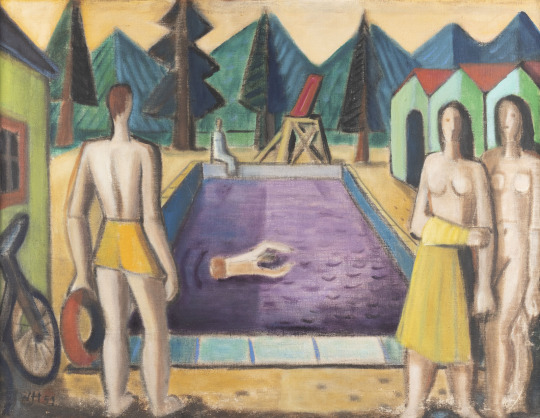
Wolfgang 'Wolf' Hoffmann - At The Swimming Pool. 1951
9 notes
·
View notes
Note
hi i have a little 18th century german boy oc and u r the only german person ik . i want to strike a deal . if u suggest German names i will give u cat pictures
A lil 18th century German oc? Oh boy oh boy those dudes had terrible names like Gerhard, Eberhard, Reinhard…lots of hard huh…
But here are a few German names (also a bit Nordic, cuz I’m a bitch living in the north and c’mon Hanse <33) which I believe to be rather timeless and free of the grandpa stamp:
-Hans
-Erik (also Eric)
-Anton
-Till
-Emil
-Mats
-Fiete
-Lars / Lasse
-Konrad (also Conrad)
-Fred
-Moritz
-Jannik (also Jannick, Yannic, Yannik, Yannick…)
-Gustaf (also Gustav)
-Arne
-Phillip (also Fillip)
-Finn
-Jakob
-Jan
-Nils
-Julius
(Not me searching through my followers on insta to look up my classmate’s names…👹)
Those would be a few that come to mind when I think of timeless names that guys had in the 18th century and today. When we think about 18th century people specifically, I just think of writers and artists of that time, like:
Johann Wolfgang von Goethe (<3) and his boyfriend
Friedrich Schiller,
Gotthold Ephraim Lessing,
Joseph von Eichendorff (<3),
Caspar David Friedrich (<3),
Heinrich Reinhold…etc. etc…
As most last names, Germany’s last names are an indicator for the occupation someone had (unless there’s a von, that means they’re nObLe), here are some examples:
-Schmidt
-Weber (hehe)
-Bauer
-Müller / Möller
-Koch
-Schneider
-Fischer
-Meier/Meyer
-Wagner
-Becker
-Hoffmann
-Schäfer
-Wolf
-Neumann
-Zimmermann
-Krüger
-Köhler
Etc. etc….
NOW GIVE ME THE CAT PICS 🔫
31 notes
·
View notes
Photo
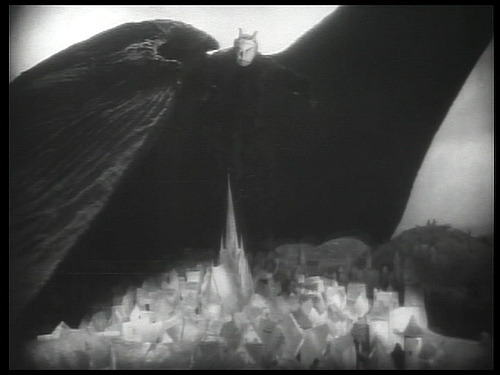
Faust (F.W. Murnau, 1926)
Cast: Gösta Ekman, Emil Jannings, Camilla Horn, Frida Richard, William Dieterle, Yvette Guilbert, Eric Barclay, Hanna Ralph, Werner Fuetterer. Screenplay and titles: Gerhart Hauptmann, Hans Kyser, based on a play by Johann Wolfgang von Goethe. Cinematography: Carl Hoffmann. Art direction: Robert Herlth, Walter Röhrig. Film editing: Effi Bötrich.
Power corrupts, as we knew long before Lord Acton so nicely formulated it for us. It's the truth underlying so many myths, from the Garden of Eden to the Nibelungenlied to the Faust legend. Goethe's Faust is a philosophical poem, a closet drama not designed for stage or film, but that hasn't prevented playwrights, opera librettists, or screenwriters from making the attempt. F.W. Murnau's version is probably the most distinguished cinematic attempt, but not because of its fidelity to the source. Murnau's version works because it concentrates on the power struggle, initially between Good, as represented by the archangel (Werner Fuetterer), and Evil, as represented by Mephisto (Emil Jannings), and later by the attempt of Faust (Gösta Ekman) to obtain mastery over Time. It begins with a wager, borrowed from the book of Job, between the archangel and Mephisto, over whom Faust's soul will belong to. Then it eventually devolves into what is the core of most dramatic treatments of Goethe's story, the seduction of Gretchen (Camilla Horn), with the aid of Mephisto. In the end, both Gretchen and Faust are redeemed by his willingness to sacrifice himself, an abnegation of power. But that too-familiar story is distinguished by Murnau's staging of it, with the significant help of Carl Hoffmann's cinematography and the art direction of Robert Herlth and Walter Röhrig. This is one of the most beautiful of silent films because of the interplay between light and dark, a superb evocation of the paintings of Rembrandt in the composition and lighting of scenes. The tone of the film is set near the beginning by the spectacular image of a gigantic Mephisto looming over a German town, which clearly influenced the similar scene in the "Night on Bald Mountain" sequence of Walt Disney's Fantasia (1940). Jannings manages to be both sinister and gross as Mephisto -- the latter mode most in evidence in his scenes with Gretchen's lustful Aunt Marthe (Yvette Guilbert). (If Guilbert looks familiar it's because, as a Parisian cabaret singer during the Belle Époque, she was the subject of numerous portraits by Toulouse-Lautrec.) This was the last of Murnau's films in Germany: The following year he moved to Hollywood, where he made probably his greatest film, Sunrise. He was soon followed to America by the actor who played Gretchen's brother, Valentin, William Dieterle, who became a prominent Hollywood director.


Top: Yvette Guilbert and Emil Jannings in Faust. Bottom: Yvette Guilbert by Henri de Toulouse-Lautrec.
8 notes
·
View notes
Text
BONN, Germany (AP) — The German government dismissed calls Wednesday for a last-minute delay in shutting down the country's last three nuclear power plants this weekend.
Opposition politicians and even some members of the Free Democrats, a libertarian party that's part of Chancellor Olaf Scholz's governing alliance, have demanded a reprieve for the remaining reactors, which were already operating without requisite safety checks.
“The nuclear phase-out by April 15, that's this Saturday, is a done deal,” Scholz spokesperson Christiane Hoffmann said.
Successive German governments planned a phase-out of nuclear power. The last three plants originally were scheduled to shut down on Dec. 31, 2022. Scholz ordered a postponement last year amid concerns that Germany might face an energy shortage due to the war in Ukraine.
Lawmakers approved the extension on the condition the plants, which began operation more than 30 years ago, would cease operating by mid-April of this year.
Critics argue that switching off the nuclear plants now deprives Germany of a source of low-emission power and requires the country to keep operating fossil fuel plants that contribute to climate change.
Wolfgang Kubicki, deputy leader of the Free Democrats, said in an interview with the Funke Media Group that Germany has the safest nuclear power plants worldwide and switching them off would be "a dramatic mistake" with painful economic and ecological consequences.
Other members of his party have called for the nuclear plants at least to be maintained as a fallback in case they are needed at a later date.
But doing that would be both illegal and costly, according to Environment Ministry spokesperson Bastian Zimmermann. The ministry oversees nuclear safety in Germany.
Zimmermann said the three reactors — Emsland, Neckarwestheim and Isar II — last underwent safety checks in 2009 and such inspections normally need to occur every 10 years. The requirement was only suspended due to the shutdown planned for the end of 2022, he said.
Any further lifetime extension for the plants would require comprehensive and lengthy security checks again, Zimmermann said.
The country is still searching for a location to permanently store almost 2,000 containers of highly radioactive waste for thousands of generations.
The Economy Ministry dismissed concerns that Germany won't be able to meet its energy needs without the nuclear power plants, which currently produce about 5% of the country's electricity.
Ministry spokesperson Beate Baron said recent studies showed German would be able to maintain its power supply with coal and gas-fired power plants and renewables such as wind and solar, while remaining a net exporter of electricity.
Baron said the government wants to phase in the use of hydrogen that can be produced without greenhouse gas emissions and fired up quickly on days when there's little sun or wind for renewables.
8 notes
·
View notes
Text
THE 236 GREATEST PERSONALITIES IN THE ENTIRE KNOWN HISTORY/COLLECTIVE CONSCIOUSNESS OF THIS WORLD! (@INDIES)
i.e. THE 236 GREATEST PERSONALITIES IN WORLD HISTORY! (@INDIES)
Rajesh Khanna
Lionel Messi
Leonardo Da Vinci
Muhammad Ali
Joan of Arc
William Shakespeare
Vincent Van Gogh
Online Indie
J. K. Rowling
David Lean
Nadia Comaneci
Diego Maradona
Wolfgang Amadeus Mozart
Meena Kumari
Julius Caesar
Harrison Ford
Ludwig Van Beethoven
William W. Cargill
Fritz Hoffmann-La Roche
Samuel Curtis Johnson
Sam Walton
John D. Rockefeller
Andrew Carnegie
Roy Thomson
Tim Berners-Lee
Marie Curie
James J. Hill
Cornelius Vanderbilt
Roman Polanski
Samuel Slater
J. P. Morgan
Cary Grant
Dmitri Mendeleev
John Harvard
Alain Delon
Ramakrishna Paramhansa (Official God)
The Lumiere Brothers, Auguste & Louis
Carl Friedrich Benz
Michelangelo
Maharishi Mahesh Yogi
Ramana Maharishi
Mark Twain
Swami Sri Yukteswar Giri
Bruce Lee
Bhagwan Krishna (Official God)
Charlemagne
Rene Descartes
John F. Kennedy
Bhagwan Ganesha (Official God)
Walt Disney
Albert Einstein
Nikola Tesla
Alfred Hitchcock
Pythagoras
William Randolph Hearst
Cosimo de’ Medici
Johann Sebastian Bach
Alec Guinness
Nostradamus
Christopher Plummer
Archimedes
Jackie Chan
Guru Dutt
Amma Karunamayi/ Mata Parvati (Official God)
Peter Sellers
Gerard Depardieu
Joseph Safra
Robert Morris
Sean Connery
Petr Kellner
Aristotle Onassis
Usain Bolt
Jack Welch
Alfredo di Stefano
Elizabeth Taylor
Michael Jordan
Paul Muni
Steven Spielberg
Louis Pasteur
Ingrid Bergman
Norma Shearer
Dr. B. R. Ambedkar
Ayn Rand
Jesus Christ (Official God)
Luciano Pavarotti
Alain Resnais
Frank Sinatra
Allah (Official God)
Richard Nixon
Charlie Chaplin
Thomas Alva Edison
Alexander Graham Bell
Wright Brothers
Arjun (of Bhagwan Krishna’s Gita)
Jim Simons
George Lucas
Swami Sri Lahiri Mahasaya
Carl Lewis
Brett Favre
Helen Keller
Bernard Mannes Baruch
Buddha (Official God)
Hugh Grant
K. L. Saigal
Roger Federer
Rash Behari Bose
Tiger Woods
William Blake
Jesse Owens
Claude Miller
Bernardo Bertolucci
Subhash Chandra Bose
Satyajit Ray
Hippocrates
Chiang Kai-Shek
John Logie Baird
Geeta Dutt
Raphael (painter)
Bhagwan Shiva (Official God)
Radha (Ancient Krishna devotee)
George Orwell
Jorge Paulo Lemann
Catherine Deneuve
Pierre-Auguste Renoir
Bill Gates
Bhagwan Ram (Official God)
Michael Phelps
Michael Faraday
Audrey Hepburn
Dalai Lama
Grace Kelly
Mikhail Gorbachev
Vladimir Putin
Galileo Galilei
Gary Cooper
Roger Moore
John Huston
Blaise Pascal
Humphrey Bogart
Rudyard Kipling
Samuel Morse
Wayne Gretzky
Yogi Berra
Barry Levinson
Patrice Chereau (director)
Jerry Lewis
Louis Daguerre
James Watt
Henri Rousseau
Nikita Krushchev
Jack Dorsey
Dev Anand
Elia Kazan
Alexander Fleming
David Selznick
Frank Marshall
Viswanathan Anand
Major Dhyan Chand
Swami Vivekananda
Felix Rohatyn
Sam Spiegel
Anand Bakshi
Victor Hugo
Bhagwan Sri Sathya Sai Baba (Official God)
Steve Jobs
Srinivasa Ramanujam
Lord Hanuman
Stanley Kubrick
Giotto
Voltaire
Diego Velazquez
Ernest Hemingway
Francis Ford Coppola
Michael Douglas
Kirk Douglas
Mario Lemieux
Kishore Kumar
James Stewart
Douglas Fairbanks
Confucius
Babe Ruth
Raj Kapoor
Titian aka Tiziano Vecelli
El Greco
Francisco de Goya
Jim Carrey
Mohammad Rafi
Steffi Graf
Pele
Gustave Courbet
Rani Laxmibai of Jhansi
Milos Forman
Steve Wozniak
Georgia O’ Keeffe
Mala Sinha
Aryabhatta
Magic Johnson
Patanjali
Leo Tolstoy
Tansen
Henry Fonda
Albrecht Durer
Benazir Bhutto
Cal Ripken Jr
Samuel Goldwyn
Mumtaz (actress)
Panini
Nicolaus Copernicus
Pablo Picasso
George Clooney
Olivia de Havilland
Prem Chand
Imran Khan
Pete Sampras
Ratan Tata
Meerabai (16th c. Krishna devotee)
Queen Elizabeth II
Pope John Paul II
James Cameron
Jack Ma
Warren Buffett
Romy Schneider
C. V. Raman
Aung San Suu Kyi
Benjamin Netanyahu
Frank Capra
Michael Schumacher
Steve Forbes
Paramhansa Yogananda
Tom Hanks
Kamal Amrohi
Hans Holbein
Shammi Kapoor
Gerardus Mercator
Edith Piaf
Bhagwan Shirdi Sai Baba (Official God)
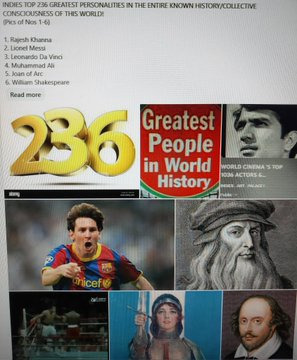


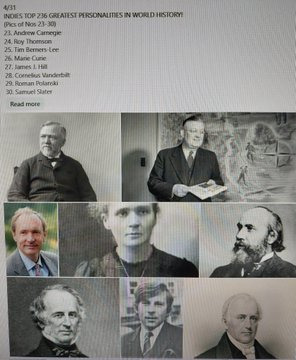
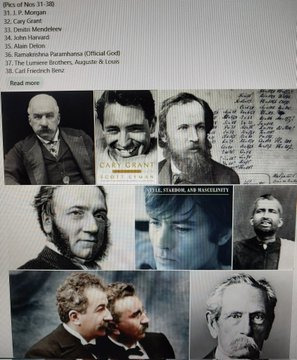
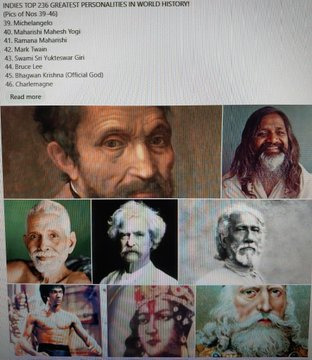
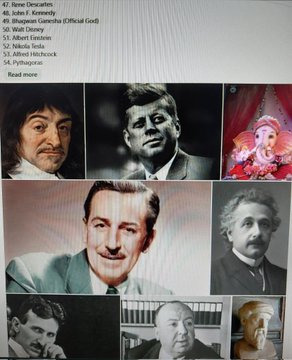

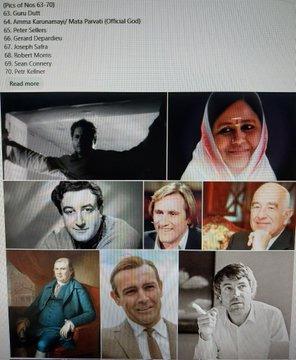



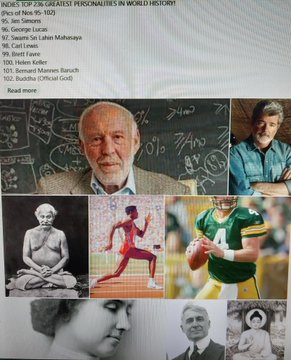
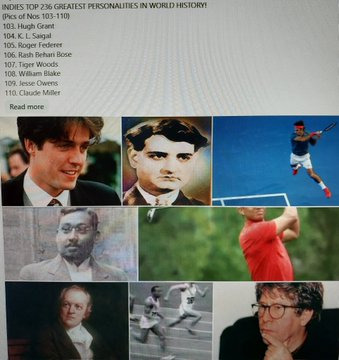
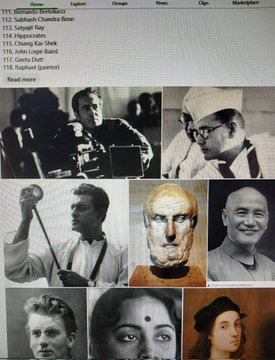

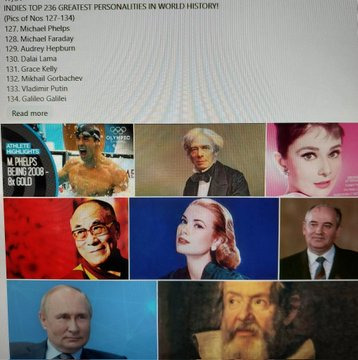

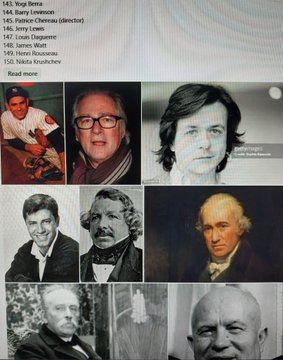
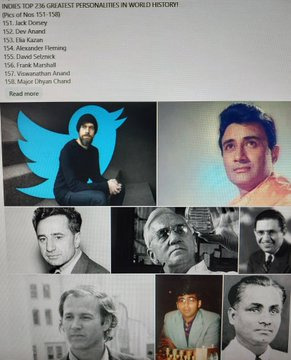
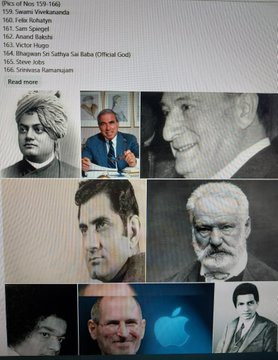
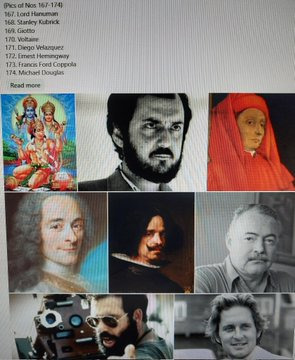
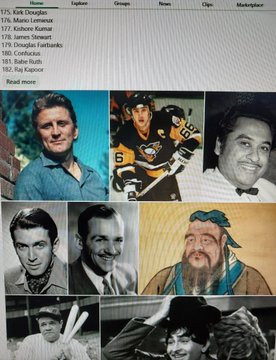
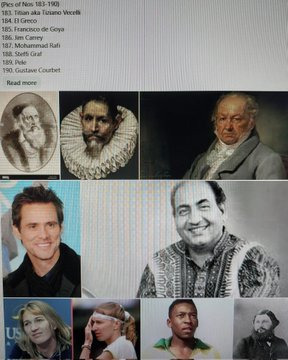
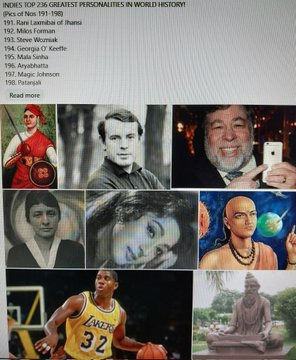
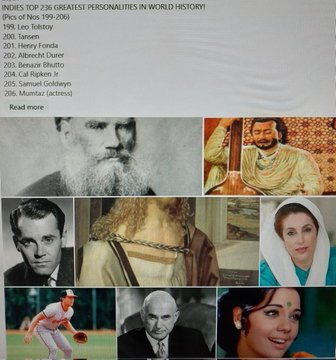

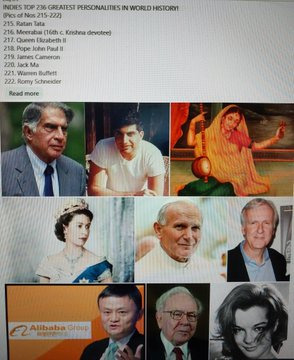

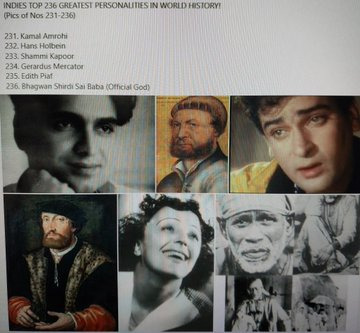
3 notes
·
View notes
Text

=”[ FRONTEIRAS -:
Fringe : Границы : Granitsy -: Livro Segundo ]”=
-:”{ SECÇÃO C }”-:
-:”( Em Base das Informações dadas pelos Seres Contatantes , que em desde Anotadas , aqui as escrevo com minhas próprias Palavras)”-:
“ Nesta Terra hão milhares de Pessoas que Acreditam em Reencarnação ,em Todas as partes do Panorama Mundial , independente de que Contraria a Crença de alguns , Note que Tais Seres também me Ditaram Outros Temas , Sobre Psíque , Constituição Humana , Ciência , Armas , Política , Espaço , e o Mais...,
que podem ser Aproveitados ...,
onde no Continuar do Assunto que se Refere a esta Obra -: Fronteiras...,
no que se diz respeito a Reencarnação, neste exemplo -:
o Mais que Enviado das Forças Superiores do Mais Além desta Terra...,
John Dee , Autor de Heptarquia Mística , Alfabeto Enoquiano , e o Mais...,
teve várias vindas nesta
Terra , em Sucessiva foi Chamado Wolfgang Von Goethe..., e já em Outra teve seu Nome à ser J.R.R. Tolkien...,
Já Outro dos Enviados das Forças Superiores do Mais Além desta Terra Felipe de Léon , Mestre do Mais que Contatado Levi foi em uma de suas Vindas , o mesmo Jacques Albin Simon Collin de Placys , que Teve sua Obra -: Dicionário Infernal , datada de 1842 , Alterada por Específicos ligados a Igreja de Roma e Intrusos nós Colégios Iniciáticos...,
Já Outro Enviado das Forças Superiores do Mais Além desta Terra, o Compositor Giovanni Pierluigi da Palestrina foi o mesmo que em Outra Vinda teve seu Nome à ser Ernst Theodor Wilhelm -: Hoffmann...,
já o Medium Daniel Douglas Home é o mesmo que em desde o Outro Lado , recebeu Proposta de se Reencarnar no Brasil , por Ter Elevado Grau de Mediunidade , para Ajudar e Incrementar a Doutrina dos espíritas , ou de Allan Kardec , onde no Brasil Daniel Douglas Home teve seu Nome à ser Francisco Cândido Xavier , sendo que Emanuel é o mesmo Emanuel Kant , Filósofo que havia Nascido na Alemanha , que Apareceu para Francisco Cândido Xavier , sem falar ser Emanuel Kant , pois este estava com Nome de Sucessiva Reencarnação , que Ocultou o Ligar de Emanuel Kant a si , Apareceu para Francisco Cândido Xavier com a Aparência que o mesmo Emanuel Kant tinha quando Reencarnou em Pompéia , onde os “ Espíritos “ podem Embaçar a si mesmos e Criar uma Envoltura e Tomar a Aparência de Criança , Velho ou como lhe Convém , fazendo isto com Concentração , Formação de Imagem ou Ideoplastia que é a mesma Imaginação, Acrescido de Fluidos , Eflúvio , Ectoplasma e o Mais com o Ergo Potencial , qualquer “ Espírito “ pode fazer...,
onde Emanuel Kant , com Outro Nome , de Sucessiva Reencarnação no Brasil , Rege a Integração de Lojas Maçônicas de certa Cidade Brasileira...,
mas Rege do Outro Lado , do mundo dos mortos...,
onde Francisco Cândido Xavier Não é Enviado e Nem Contatado das Forças Superiores do Mais Além desta Terra , é uma Pessoa que Tem Alto Grau de Mediunidade...,
que Segundo os Seres Contatantes...,
Mediunidade é o Grau Co- Ângular de Deslocamento entre o Corpo e o Duplo Eterico , como alguns chamam , chamado por Outros “ perispírito..., ligado ao Corpo , Quanto Maior a Inclinação com o Mais , Maior é o Grau de Mediunidade , onde Mediunidade 95% das Pessoas Generalizadas desta Terra possuí ,
já Wagner -: Nunca Teve Mediunidade...,
onde Não se pode Confundir Mediunidade com Outros Tipos de Sensitividade Designada Paranormal , e Nem com a Chamada Percepção Extra Sensorial...,
Esclarecendo que Wilhelm Richard Wagner , que Teve uma de suas Vindas , na qual foi Ptholomeu , o Primeiro dos Reis Ptholomeus do Remoto Egito...,
que quando Wagner Partiu de Veneza , quem foi para o Lado Outro , o mundo dos mortos foi a Réplica , Dez Anos antes de morrer em Veneza , Wagner foi Absorvido de Forma Estrutural e Íntegra , passou por uma Câmara , nesta sua Personalidade Desvaneceu , sua Psíque foi Transformada em Algo Distinto , com Capacidade Inimaginável , Ligado aos Sistemas e Mais das Forças Superiores do Mais Além desta Terra...,
seu Corpo e Mais , Teve Ícones Separados e Acrescentados , Convergido em Extrato e Mais , e Este Acorda ante os Seres que Já os Conhece , com Outra Forma , Aparência , Estrutura Intermediária Superior , Toda está Operação Leva Menos de Três Segundos , e Como um Outro , Sem deixar de ser a si mesmo...,
desta Estrutura se Funde a sua Outra Estrutura com Magnitude Maior Inimaginável , onde Não tem Natureza Humana , mas se parece com um Europeu , sua Estrutura Superior Ultra-Trancedente , que Jamais é tocada pela Velhice , Nem pelas Doenças , e Nem pelo Morrer ...,
e que é o Reflexo Espelhado do mesmo com o Nome Helliásther ..., que se Predispõe em Outro Onde , mas seu Reflexo é o próprio , uma das Nove Manifestações Diferenciadas de Asthreálphix...,
sendo uma das Grandes Hierarquias das Forças Superiores do Mais Além desta Terra...,
com Capacidade de se Desdobrar , como Hologramas Mais que Compactos , que Não são Clones , para com Ajustes de Magnitude , ter Acesso a Vários Ondes Distintos ,no mesmo Simultâneo , em Mundos por detrás de Mundos , que se dão por detrás desta Terra, e no Mais Além , para cada Onde tem um Nome , e Mais ...,
em um destes Ondes é Chamado Dervatto...,
onde Wagner é o mesmo que como Referido , já Convergido em Pessoa ,e passando pela Câmara , veio em Outra Vinda , com seu Nome Howard Philips Lovecraft...,
que Ocorreu Algo (...)!!!-:
Algumas Hierarquias ou Lideranças das Forças Superiores do Mais Além desta Terra , Optaram pelo Pragmático que Excedeu em Mais que Crime...,
Por isto disseram a Henrich (...)-:
“ Teu Ódio nos Acusará ante um Conselho Ultra- Transcendente , que já nos Avisou que iremos pagar , Predispostos a Justiça Superior...,”
Que Tais Seres Específicos Efetuaram o Seguinte (...)-:
Quando a Réplica de Wagner estava no mundo dos mortos , os Seres Incidiram Certos Inimigos de Wagner , e com Algo Mais fizeram chegar para estes uma Informação Falsa -:
“ Wagner se prepara para Reencarnar na França , onde se Chamará Henrich ,e será Premiê ,para Realizar uma Obra Política Magistral que Ofuscará o Mundo...,”
Wagner Colocou está Informação , Naquela Época , Trocado Várias vezes pela Réplica , até que Não Mais Retornou , em Lohengrin , Obra na qual Citou um Personagem , o Rei Henrich...,
Claro , a Informação que chegou aos Inimigos de Wagner , no mundo dos mortos era Falsa...,
E tal Informação chegou ao Maior dos Inimigos de Wagner , nesta Terra...,
chegou a Absalon...,
o que em uma das Reencarnações foi Polícrates , e na Outra Reencarnação foi Maximilien François Marie Isidore de Robespierre...,
que na Época tinha se Reencarnado como Descendente de Napoleão Bonaparte , Ligado a Família de Napoleão Bonaparte , portanto , Robespierre com Outro Nome , mas Atuante no Outro Lado , no mundo dos mortos , Focalizado em seus Objetivos Ocultados na Ásia e na Europa...,
então -: “ Houve um Tumulto dos Inimigos de Wagner...,”
Robespierre chamou a Outra , uma das Maiores Inimigas de Wagner -:
Catharina Dí Médice...,
que em Reencarnação Muito Próxima da Outra foi Lucrécia Bórgia...,
e com Outros Organizaram uma Reunião...,
nesta Época ...,
Wagner já tinha Concorrido a Outra Vinda , na América ..., com o Nome Howard Philips Lovecraft...,
então a Reunião apontava que -: “ Tinham que Impedir Lovecraft de Nascer na França...,”
pois vivos e mortos desta Terra , e os ditos Acusados e Outros -:
Nada Sabem sobre Réplicas , Seres Contatantes, Forças Superiores do Mais Além desta Terra , enfim Sobre Nada...,
para estes Todos ,
quem estava no Lado dos mortos era Wagner ,
para estes , de Wagner suas Vindas é por Reencarnação ,
Entretanto é como Já Mencionado...,
então houve que Robespierre com Catherina Dí Médice e Outros -:
pegaram a Lista dos Maiores Inimigos de Wagner , através dos Séculos e Milênios...,
e Enviaram Específicos para os Convocar , sem Nada Falar do Envolvimento de Robespierre, Nem de Catherina Dí Médice e Nem dos demais...,
Falaram que Lovecraft estava preparando para ser Premiê na França , com o Nome Henrich...,
E Tinham que Impedir a Todo Custo , Lovecraft de se Reencarnar na França...,
Tinham que Desviar o mesmo...,
E foi Escolhido na Época...,
Uma Nação Não Tão Desenvolvida como a França e Outras ,e que estava em Fase de Desenvolvimento , propícia a Greves , Crises , etc...,
escolheram o Brasil...,
então, os Inimigos de Wagner se Reuniram...,
Vieram de Todas as Partes ...,
E no mundo dos mortos...,
Formaram Grupos Clandestinos que os Seres Contatantes Apontaram estes Grupos como -:
“ Aglomerado Tumultuado...,”
eram tantos os Inimigos de Wagner , que no Virem dariam como -: 70 -: Setenta Ônibus de 50 Cinquenta Assentos Ocupados , Neste Apontar Metafórico , só para Indicar a Quantidade dos ditos...,
e Camuflados no Lado Outro , o mundo dos mortos , passaram a Preparar a Área de Trabalho...,
para Tal Investida...,
Grupos que são como Inexistentes , em Meio das Multidões de Vivos e Mortos , que são Influênciados pelo Propósito dos ditos Acusados...,
que no mundo dos mortos , enviaram Específicos até Lovecraft ( uma Réplica)...,
e disseram para Lovecraft que Este Jamais Deveria se Reencarnar na França , pois Cosima , Filha de Franz Liszt estava Reencarnado no Brasil, Cercada e Envolvida com Inimigos de Wagner , Específicos e que Lovecraft, que é o mesmo Wagner com o Nome que teve na Outra Vinda , Deveria “ Socorrer “ Cosima , que no Brasil Reencarnou com o Nome Maria...,
Entretanto (...)-:
Lovecraft já Sabia da Trama...,
desde os Seres Contatantes...,
Aquela Não era Cosima...,
e Sim(...)-: Catharina Dí Médice , que no mundo dos mortos se Camuflou Sem Revelar quem era , Veio do Outro Lado da Bélgica , onde Catherina Dí Médice no Lado Outro , com Nome Outro , Assiste um Parlamento , Não no Lado dos Vivos , Mas dos Mortos , Parlamento onde a mesma Deveria ser Incriminada e Expulsa ,
mas Esta Veio dali , do Outro Lado , e se Camuflou Sem Indicar seu Posto , Nome ou Ligação com a Bélgica , mas no Outro Lado , Veio como se Vindo de Outro Lugar , Camuflada -: Robespierre Não Entrou nós Grupos , que Regia a Distância , Sem as Lideranças dos Grupos Saberem de seu Envolvimento...,
onde Camuflada , com Outro Nome e Concorrente deste módo aos Grupos...,
Catharina Dí Médice se Disfarçou com a Aparência de Cosima...,
para se Reencarnar no Brasil , com a Nova Aparência e Nome de sua Outra Reencarnação...,
com o Nome Maria...,
onde a Verdadeira Cosima , nada sabendo dos Grupos se dava Reencarnada , onde se encontrou o Amigo de Wagner , Franz Liszt como Artista Plástico Pintor de Quadros , com Belas Paisagens , Esculturas , Ambos Cosima e Franz Liszt ( que Não é Contatado , Nas Auxiliado Sem Saber , pelos Seres Superiores ) ,
então no Respectivo , na Grã- Bretanha e na Nova Zelândia...,
Nesta Reencarnação Atual -: Não são Parentes , e se Casaram...,
atuando nas Artes...,
então -:
Lovecraft se Desviou da França , e foi ao Brasil...,
Já com seu Nome Henrich (...)!
Mas quando Wagner Concorreu a sua Vinda como Lovecraft , Tais Seres Específicos o Deixaram com a Mesma Magnitude Ajustada de Wagner , porém em Desvantagem Pré – Planejada ...,
Lovecraft quando Partiu , a Réplica ficou em seu Lugar , e Tais Seres Acentuaram a Doença que o matou...,
e com o Complô já Formado no mundo dos mortos...,
tais Seres Específicos -:
Sincrônizaram o Não – Humano , que Chamam Despojo Repugnante que por sua vez , é a Antítese de Asthreálphix , Lógo é a Antítese do mesmo Helliásther...,
Tal Antítese que tem a Formalidade de Qlipphos Inverso e neste o Qlipphoth Invertido...,
O Contrário Infrator Específico Mais que Imundo e Delinquente...,
e o Atraíram para Lovecraft...,
o Contrário Infrator Específico vendo que Lovecraft estava em Desvantagem...,
se Aproximou de Lovecraft...,
e Exerceu Controle -: sobre Todos os Inimigos de Lovecraft...,
e Lovecraft surgiu em Outra Vinda como Henrich...,
e o Contrário Infrator Específico o Atacou de Todos os Módos...,
no Transcurso da Vivência , Convergida em Maldição para Lovecraft...,
seus Inimigos , os Integrantes do Aglomerado Tumultuado , Reencarnados como Médicos , Juízes , Advogados , Promotores , Comerciantes , Maçons , Clérigos , etc...,
em desde o Lado Outro , o de onde Reencarnaram ,
Tocaram e Corromperam Outros e Mais ...,
E de Henrich Fecharam Todas as Portas , e Fragmentaram Todo o -: “ Padrão Existêncial...,”
no mesmo Simultâneo que o Contrário Infrator Específico Danificou os Condutos de Valores e do Direçionar dos Valores , onde Valores segundo os Seres Superiores são Algo como uma Variante de Nanitos que Formam o Pensamentos , Sentimentos e Mais , Relacionados com os Condutos de Influxo, onde Há Comutação , Permuta , Intercâmbio , Transformação e Mais destes Valores , nos Senso ou Departamentos da Psíque e de seus Sensores e Mais , e que se Liga com Outros Ícones que Integram a Constituição Humana...,
que Tais Seres Não Podiam Intervir de Forma à Gerar Efeitos Mostráveis , porque se Efetivassem , o Contrário Infrator Específico Não iria Cair na Armadilha , que Tais Seres Específicos Efetuaram para Prender e Desintegrar o Contrário Infrator Específico...,
o que se Evidenciou...,
Henrich ( Henrique )...,
já Sob o Raio de uma Sincrônização desde sua Vinda , Precisamente em 18 de Agosto de 2002 , como Mencionado no Relato de Contato , Dividido em Três Partes e que dei o Título -: “ Um Outro Sonho de uma Noite de Verão...,
em Memória a William Shakespeare...,
Foi Bruscamente , de Súbito Atingido por Algo , Sim no mundo dos vivos...,
que se Tratava de um Raio Conduto Potencial Descodificado -:” Ligado aos Sistemas Integrados, por sua vez , Ligados ao Mais Abrangente...,”
Fonte deste Algo e do Inimaginável...,
que Tais Seres -: com Seres Outros..., no Ultra – Incógnito Operam por Detrás da Fonte , os Sistemas e Mais...,
próprios das Forças Superiores do Mais Além desta Terra...,
e este Algo se Traduziu como uma Sincrônização...,
onde a Outra Sincrônização -: Foi Retirada mas Algo da mesma passou para a Referida...,
que Após Seis Meses...,
Tais Seres Convergeram em Sincrônização Inversa ou Dessincrônização...,
pois o Obsessor , o Contrário Infrator Específico Vendo a -: “ Novidade...,”
Caiu na Armadilha...,
Entrando Dentro do Raio da Sincrônização , que Inverteu e o Prendeu Dentro , Separado de Henrich...,
Onde os Seres Criaram um Campo e Barreira , e se Formou uma Ala ou Departamento Involucrado , no qual o Contrário Infrator Específico ficou Preso Dentro , sem poder sair...,
para ser Extinto e Desintegrado...,
neste Co- Simultâneo...,
Absorveram a Psíque , Personalidade e Mais de Henrich...,
e Desintegraram , fazendo Algo Semelhante , Operar no Lugar destes , Ligado a Atual e Transitória Des- Sincrônização ou Sincrônização Inversa (...)!”
“ ( Continua na Secção D )”
1 note
·
View note
Video
youtube
Johann Vierdanck (1605-1646) - 00:00 - Canzona in C major [Track01] 04:33 - Passamezzo in A minor [Track07] 11:56 - Capriccio in C major [Track20]
Parnassi musici : (Margaret MacDuffie, Matthias Fischer, Wolfgang Greser - violin Stephan Schrader - cello Sergio Azzolini - bassoon France Beaudry-Wichmann - double bass Hubert Hoffmann - arciliuto Martin Lutz - organ & harpsichord
4 notes
·
View notes